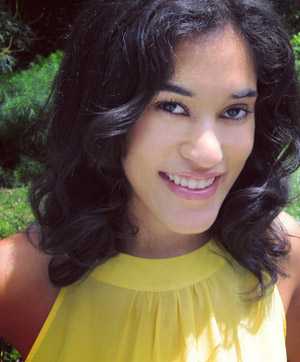Dalila’s Story: “How My Cerebral Palsy Gives Me Strength”

March 25th is Cerebral Palsy Awareness Day. Diagnosing cerebral palsy at an early age is important for children and their families. Read Dalila’s story about how her cerebral palsy diagnosis helped her realize her strength.
“I have mild spastic diplegia. My cerebral palsy (CP) made me the person I am today. It has shown me that there is strength in the weak and a world full of outsiders.
Since I grew up unaware of my CP diagnosis, my younger self was only conscious of the fact that my stiff muscles made it taxing for me to walk straight and for long distances, to wear certain shoes, and to participate in vigorous activities. I now realize that these difficulties were strongly magnified by the negative emotions they produced. Feeling as though I did not fit in and devoting energy to try to mask that very fact caused more pain than the tangible, physical aches. I did not fully understand why my body could not move the way most kids’ could, and my confusion only worsened my perception.
As a coping mechanism, I ignored my responsibilities to stretch my leg muscles. I hoped that if I didn’t acknowledge my complications, then maybe one day they would just evaporate. I am certain that I would not have increased flexibility in my muscles without my family's support and their reminders to stretch. My mother took me to physical therapy sessions every week and my older brother, Christopher, helped make my assigned stretches become part of my routine. Christopher, an athlete, understood the benefits and rewards reaped from exercising and targeting particular muscles in order to strengthen them. He and I would watch television in our living room regularly; he would use the time to stretch and invited me to do so too. At the time, I felt as if my condition had already defeated me and, so, completing the stretches seemed pointless. But, for a long while, there in that living room alongside my older brother was the only setting where I felt comfortable doing my assigned stretches because it was the only place where I did not feel alone in my journey. Christopher gave me exactly what I needed then– the courage to work on myself.
After discovering I am part of the CP community, I learned that CP does not look the same on every diagnosed person. “Cerebral Palsy” is a broad term used to describe various conditions. For example, those with quadriplegia are affected in both arms and legs; those with hemiplegia have only one side of the body affected; and those with diplegia are affected in both legs. Further, there are different types, like, spastic CP which describes tight muscles, dyskinetic CP which denotes spasms, and ataxic CP which describes shakiness. I would recommend that family members of those with CP use available resources, like the Centers for Disease Control and Prevention (CDC), to remain educated on the most recent statistical findings and utilize that information for the benefit of their loved one. Equally as important, however, I also suggest they do what my brother did for me: simply be there in any way they can.
I started the Young Professionals Committee (YPC) within the Cerebral Palsy International Research Foundation (CPIRF) to be an example for other young adults who may not realize that CP is an idiosyncratic condition. Discovering my CP helped me realize that I am strong. I hope my work for the YPC helps others affected by CP find their strength and courage as well. I am continuously inspired by the possibility of making a difference, and potentially improving the lives of others with CP. I hope for a day when people with CP are understood and embraced by not only those who are somehow connected to it, but also by the general public.”
If you think your child is not meeting movement milestones or might have CP, contact your doctor and share your concerns.
If you or your doctor is still concerned, ask for a referral to a specialist who can do a more in-depth evaluation of your child and assist in making a diagnosis.
At the same time, call your state’s early intervention system to request a free evaluation to find out if your child qualifies for intervention services. This is sometimes called a Child Find evaluation. You do not need to wait for a doctor’s referral or a medical diagnosis to make this call.
Additional resources:
To learn more about cerebral palsy, please visit the CDC CP website or download our Community Report.
To learn more about the Cerebral Palsy International Research Foundation and their Young Professionals Committee, please visit their website.
- Page last reviewed: February 3, 2017
- Page last updated: January 16, 2015
- Content source:


 ShareCompartir
ShareCompartir